17 Best Sword and Sandals Movies
Discover the best sword and sandals movies from the 1960s to the 2020s.
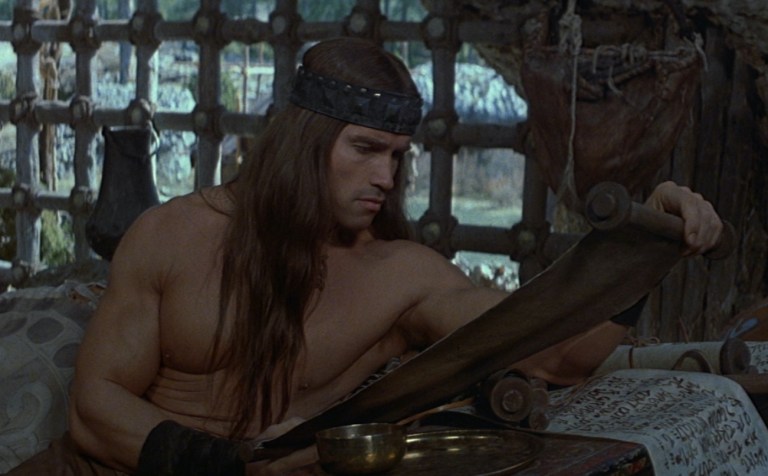
Swords and Sandals; two words that bring about a ubiquitous visualization of well bronzed men clashing in battle, under the beating Mediterranean sun. Historically speaking, the term refers to a set of movies largely produced in Italy in the fifties and sixties, trying to recreate the magic of popular American blockbusters like Ben Hur and Cleopatra. Most of these films revolved around biblical or mythological themes while many depicted lavish lifestyles of regional Empires, long past. The sets were large, the characters larger than life, the only thing small was the budget. That was sixty years ago.
Today, Swords and Sandals has a different meaning. It encompasses much more than that specific sub-genre. With the emergence of modern muscle worship, love of face to face battle sequences, and quality CGI, we are seeing more popular movies fuse into period pieces. The contemporary spirt of Swords and Sandals is more than bronze and iron age history. It’s mythos, sex appeal, political intrigue, gritty battles, attitude, empires, and wardrobe that shows off those perfectly toned legs. In this spirit, we have complied the 17 definitive films that embrace the ethos of defeating an enemy at short distances while often having ones toes dangerously exposed.
Best Sword and Sandal Movies
17. Jason and the Argonauts (1963)

If not for the genius creature creation of Ray Harryhausen, Jason and the Argonauts would be a boiler plate Swords and Sandals movie. Shot on location in Italy in the 60’s, it tackles the classic hero’s quest to attain a powerful artifact and woo a princess, while encountering supernatural creatures across the sea. This formula applies to dozens of other titles of the era, sure; but the ones that still hold up, all have Harryhausen’s fingerprints on them. This film was a vehicle for Ray in his prime, to flex his muscle. The audience is treated to multiple battles with Harpies, an enormous statue brought to life, Hydras, and a very memorable Skeleton Army. Monsters aside, it strikes all the right mythological chords, featuring a great ensemble cast with seer Medea, the cunning Jason, and a much depleted version of Hercules. We also get the classic Gods of Olympus watching and interfering from above in this multifaceted yet simple tale of the ancient Greeks.
16. Spartacus (1960)
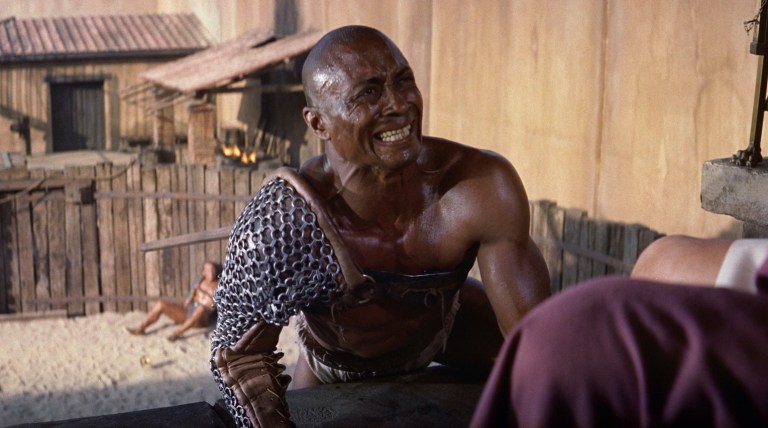
The super-team that worked to bring this story to life are legends in their own right and show that talent doesn’t need to like each other to achieve success. Screenwriter Dalton Trumbo, was at the time blacklisted as a communist and ironically welcomed back into the mainstream with this work about slaves uniting to over throw their government. Director Stanley Kubrick had not yet cemented himself as the perfectionist auteur we know him as today and after the film’s release, chose to completely disown it. His lack of autonomy from the studio and squabbles with its leading man, were more than he signed on for. The star Kirk Douglas, fought to make Spartacus after he lost the title role in Ben Hur. He wanted his own Swords and Sandals epic, and with his behind the scenes politicking he got it. Spartacus is based on the true story of a revolt lead from a gladiatorial school that spread across ancient Rome, nearly bringing down the empire. It is a fine film in its own right and an utter miracle that it works considering the writer, director, and leading man never once could openly agree on what the theme of the movie was ultimately about.
15. The Eagle (2011)

This unexpected and surprisingly entertaining tale, follows the journey of a Roman Centurion who is sent over Hadrian’s wall into the wilds of Caledonia. He must locate the infamous lost Ninth Legion and retrieve their precious Golden Eagle, Rome’s great symbol. It’s a fun and gritty action piece about finding honor while warring with hostile tribes, wilderness evasion, and defining allegiances. Channing Tatum pauses his dance moves for a serious venture in this period piece alongside Jamie Bell, who plays a subversive slave and reluctant guide. While the accents of Tatum vary from British to Flat American in each scene, he is helped by the steady baselines of Bell and later addition of the always dependable Mark Strong. The Eagle, may not reinvent the genre or take big chances, but is a straightforward simple film through and through, that hammers its tones and hits its mark.
14. The Scorpion King (2002)
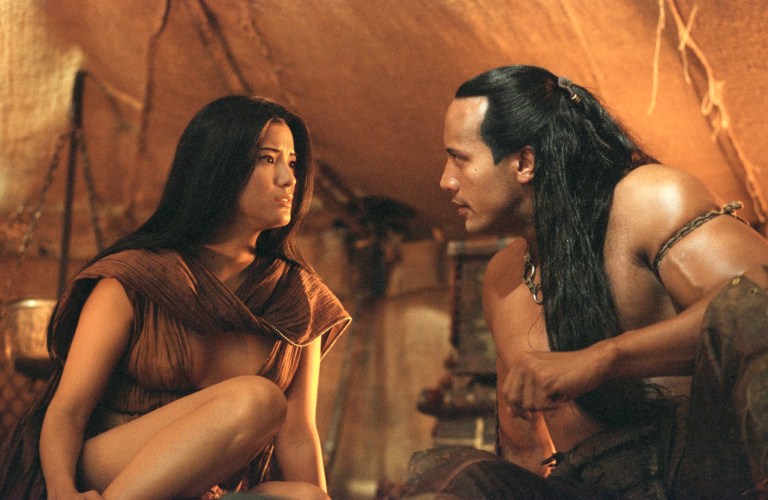
This flick is often panned as it is an obviously shameless cash grab, attempting to follow up on the great success of The Mummy franchise. If one can set aside the studio’s financial motives for making a movie, it is actually a fun, mindless watch. It carries the same vigor as The Mummy Returns while creating its own (yet ultimately predictable) story. Featuring Dwayne Johnson as the title spinoff character it becomes instantly apparent why The Mummy Returns chose to have “The Rock” portrayed almost entirely silent and in CGI. The acting ability and necessary charisma of the cast are all but missing until Michael Clarke Duncan, Grant Heslov, and Bernard Hill make their appearances to resurrect the film. But hey, even bad pizza is better than no pizza and in this instance, The Scorpion King was successful enough to launch 4 sequels of its own. An argument can be made that this is a perfect representation of Swords and Sandals, as its many follow-ups were made quick, cheap, and in foreign locations much like the movies that came half a century earlier.
13. Quo Vadis (1951)

Future Oscar winner Peter Ustinov steals scene after scene as insecure and unhinged Emperor Nero, in this grand Biblically based tale. Quo Vadis is at its heart, a love story between General Marcus Vinicius returning from the battlefront and Ligia, a devout Christian slave, who is a hostage of Rome. Their forbidden passions and romantic pursuits introduce us to a cadre of local celebrities at the time, including Peter (the first pope) and Emperor Nero. While pro Christian dialogue repeatedly clubs us over the head, the maniacal nature of Nero is what really drives the story, forcing all characters to bobble in his wake. The religious storyline in this film is not unique and was shared with many others in this era such as the Ten Commandments and Ben Hur, although this came years before them. To that very point, the crux is the development of the early church and Nero’s ruthlessness to wipe it out in order to Make Rome Great Again. It has some historical basis with many liberties taken to provide us scenes of lions eating martyrs in the Colosseum, chariot chases, riotous mobs, and supernatural religious figures.
12. The Beastmaster (1982)

Cinephiles often pass over this movie on a list such as this, but I submit to you that The Beastmaster proudly carries the torch of the original Swords and Sandals spirit. In the early 80’s wave of similar yet larger scale films, it was made on a shoestring budget and shot primarily outside on location, in the public parks of Simi Valley and Calabassas. It’s one of the only movies starring Marc Singer not made for tv, who likely got the gig because of his impressive hawk call and lack of body fat. On paper this reads like a comedy with Rip Torn as the bad guy, John Amos as a sidekick action piece, Tanya Roberts (as always) in a bikini, and a pair of ferrets throughout. What emerges in the final product however, is a creepy fun, fantasy tale of skilled swordplay, unexpected gore, exotic animal mauling, and desert vengeance.
11. Hercules (1983)
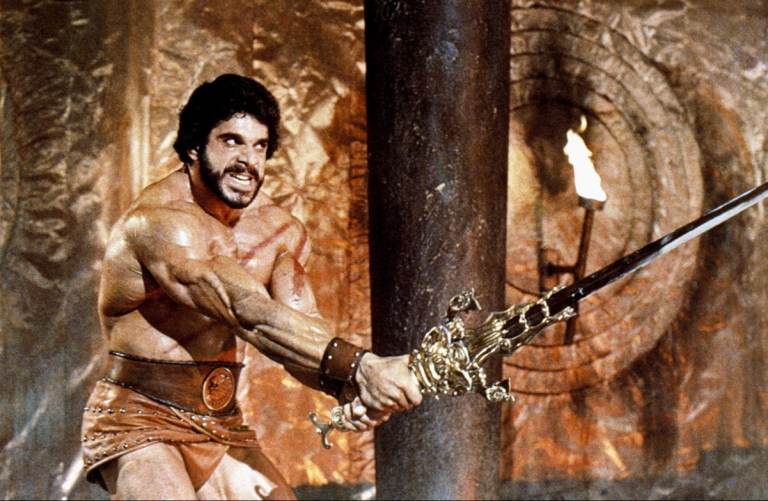
Nearly 40 years after its initial release, Hercules begs the question, “Does a movie have to be good to be great?” In this instance, you can’t always trust the reviews. The sheer and glorious 80’s vibrancy of this film gives an unintentional camp that has only increased with the passing of time. Lou Ferrigno is the perfect physical specimen cast for this tale of a Greek demigod saving the world from an evil king, sorceress, and their giant robots. That’s right, giant robots. Ferrigno, while being a good fit for this role, was dubbed over to mask his speech impediment, giving an alien quality to his otherwise stoic performance. This was not intended to be a comedy, yet there are plenty of moments where you’ll find yourself howling and struggling to catch your breath throughout. Whether it’s an enlarged Hercules separating the continents for unforeseen reasons, or hurling logs and bears through space, you can’t help but wonder if the end product is what was envisioned at inception. This addition to the list is perhaps so over the top, it forced the entire genre to take a big screen hiatus for almost two full decades.
10. 300: Rise of an Empire (2014)
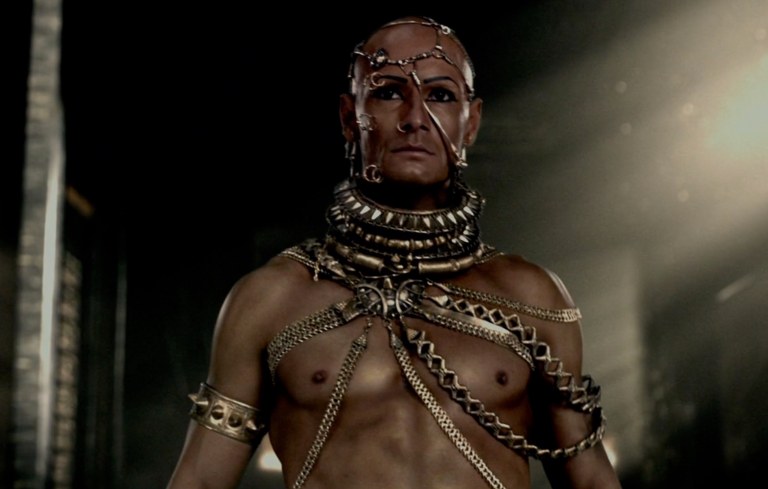
Eight years between sequels is enough time for any audience to lose interest in a story. This continuation of 300 was put in an even tougher spot when (SPOILER) nearly the entire cast was killed off in the original film’s climax. How does one follow that up? Original director Zack Snyder chose not to find out either. Perhaps it took a full eight years to figure, because rookie Director Noam Murro made it work. 300: Rise of an Empire doesn’t go forward in time, it goes lateral. With the battle of Thermopylae taking place on multiple fronts, we are treated to seafarer Themistokles’ naval endeavors against Xerxes, as Leonidas simultaneously fights at the hot gates. Purposeful choices were made to use less of the slow motion fighting style of the first film and focus on character developments and unknown backstories that brought us to this extraordinary battle. What we get is a deeper dive into the dark fantasy of author Frank Miller and a worthy sequel finishing the saga we waited so long to complete.
9. Exodus: Gods and Kings (2014)
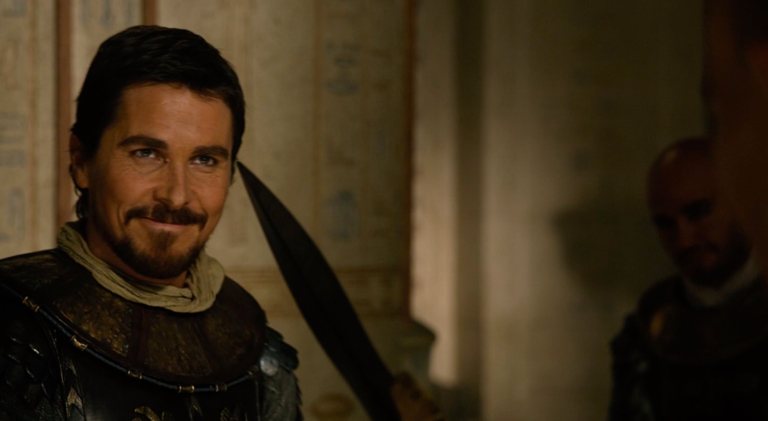
Acclaimed Director Ridley Scott takes a rare stab at religious epics in his very own version of the Ten Commandments. Loosely based on the biblical book of Exodus, this film attempts to add a more flawed, human aspect to the historical Moses while also infusing the inescapable supernatural elements as not to alienate devout purists of the tale. The result is a beautifully shot heroes’ origin saga, with enormous action sequences, a variety of death, and desert destruction. As expected, Christian Bale and Ben Kingsley easily carry their roles, but there is some questionable casting by way of Joel Edgerton, Aaron Paul, and Sigourney Weaver. Acting and pale skin tones aside, the end product is something that is visually stunning and delivers an updated take on the plagues of Egypt and the exodus of Israelites via the parting of the Red Sea.
8. The 7th Voyage of Sinbad (1958)

If you’ve ever longed to see a giant Two headed vulture or a Cyclops fight a Dragon, then you’re in for a treat. Sinbad the Sailor was a storied franchise of immense popularity, almost single handedly brought to life on the big screen through “Dynamation”. This was a full color, widescreen, stop motion technique created by Ray Harryhausen. You’ll see Ray’s name all over this list as he was the linchpin in nearly every Swords and Sandals apparatus that required giant, fantastical creatures. This installment of Sinbad, was filmed in Granada Spain, giving a gorgeous backdrop to the tale of a shrunken princess who must be rescued and restored by our courageous sailor. As always, an evil magician must be defeated to win the day, as well as the smiting of multiple stop motion monsters. This is a great nostalgia piece that gives audiences a whimsical sense of swashbuckling adventure and magic, while blazing a trail for future Swords and Sandals film makers to find a way to employ Ray Harryhausen.
7. Seven Samurai (1954)
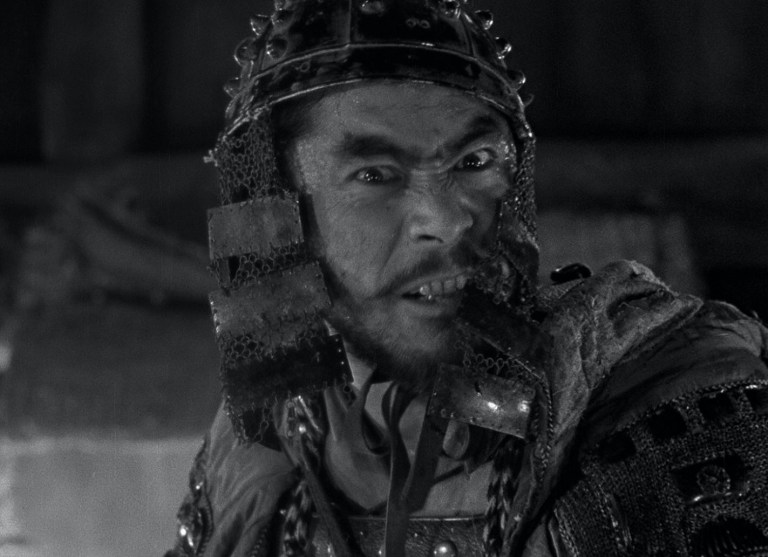
Japanese cinema is constantly ignored when we think about this genre. On the surface we are missing the ancient world of meddling Gods vs heroic Men and their larger than life myths, but when we focus on story, Director Akira Kurosawa hits every note of the same song. Seven Samurai brings us the late 1500’s feudal world run by warlords, bandits, and rogue swordsmen. It’s a setting we see in many efforts by Kurosawa. In this tale, a town of farmers hire seven masterless samurai for protection from a horde of bandits that constantly prey upon them. If this plot sounds familiar it’s because it’s been borrowed by movies from the Magnificent Seven to the Three Amigos. The cinematography and action sequences Seven Samurai are leagues beyond anything the West was doing at this time or would do for decades, as are most Kurosawa films. Movies like this have influenced scores of other filmmakers and took the Swords and Sandals genre into a beautifully serious, story driven art form.
6. Conan the Barbarian (1982)
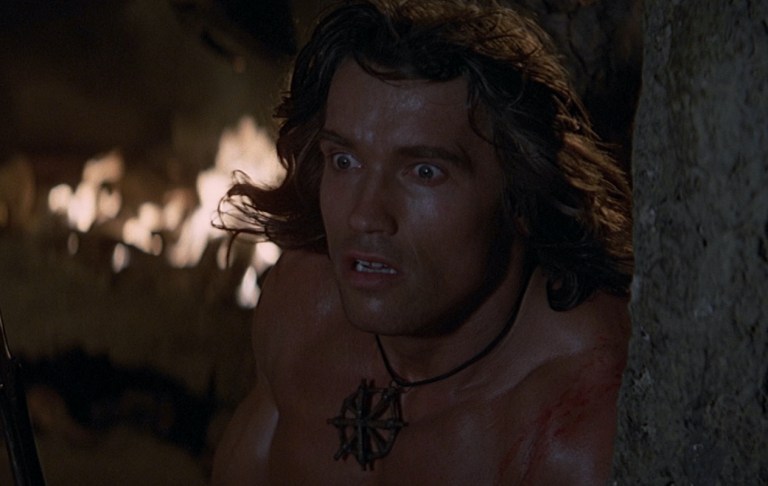
While the majority of these movies hover on historical Mediterranean tales and societies, Conan the Barbarian thumbs its nose at all of it. Conan is no hero and the world he exists in, is an ancient one of dark magic, desert strongholds, and giant swords. Played by Arnold Schwarzenegger, in the first leading role where they didn’t dub his voice, Conan is a Cimmerian (not Sumerian) of the Hyborean age. He only lives to crush his enemies and see them driven before him. His call to action is one of greed and vengeance, not good. This is a unique film where the harsh desert landscape and consistently dirty set pieces transport you to an unrecognizable world that doesn’t feel like any period of Earth we’ve read about. Technically it also qualifies as a fantasy movie, although there isn’t much of that aspect, aside from (SPOILER) James Earl Jones turning into a giant snake. The majority of the Conan’s saga is large, hairy men clashing oversized swords, shooting arrows, punching camels, and fighting to the death on horseback.
5. Ben Hur (1959)

Winning 11 academy awards (an achievement still unsurpassed) and setting the bar in Hollywood is Ben Hur. It is the gold standard of our list. Filmed on location in Italy, it has everything a big budget period piece needs to satisfy a mass audience. Whether it be the popular religious overtones, sea battles from the bowels of a Roman trireme, chariot races in the Circus Maximus, or Charlton Heston’s continued career as a leading man without pants, there’s no shortage of unique storytelling to set it above its contemporaries. Ben Hur reached much deserved critical acclaim, box office success, and swept every awards category it was in. It won Best Picture, Best Actor, Best Director, Best Supporting Actor, Best Editing, Best Cinematography; pretty much everything that matters in the business of making successful movies. It was a huge risk and ultimate payoff by MGM Studios as it was at the time, the most expensive film to date. It’s likely that we will never see a movie that loved by audiences and heavily awarded by the academy again.
4. Clash of the Titans (1981)
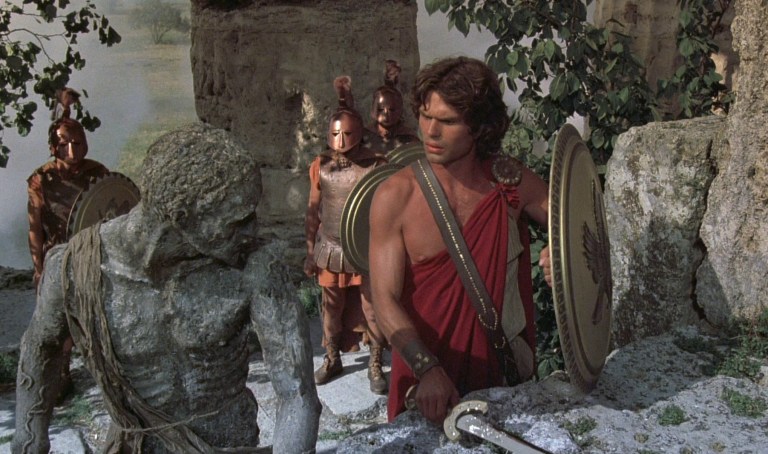
Special Effects guru Ray Harryhausen once again delivers his signature stop motion monsters in this mythological, visual feast. Clash of the Titans creates a distinct vintage feel, making you’d swear it was made in the 50’s, not the 80’s. It’s all part of a very unique world of Greek fantasy and fright. Here the chess match between the mythological gods of Olympus and mortals is played, and men are the literal pieces moved on the board for Zeus’s entertainment. The A list actors, alongside Harry Hamlin deliver enough punch to get us from one highly anticipated creature encounter to another. Modern references to Medusa and the Kraken are all thanks in part to the efforts of this film; using a variety of makeup, camera tricks, and old world movie magic to bring this mythic tale to life.
3. 300 (2006)

Never has one tale shone a light on masculinity and pushed men of the world to get in fighting shape like 300. It’s highly stylized fight scenes and blood spatters are a signature of the film, once again reinvigorating the genre after it had been nearly exhausted by multiple big budget blockbusters. The real credit goes to Frank Miller who wrote and illustrated the graphic novel the movie is based on. 300 is nearly a shot for shot recreation of that novel using Miller’s pages as storyboards. It is a comic book brought to life and likely why every man on the screen is chiseled like a full time fitness instructor. While Gerard Butler’s accent as Leonidas shifts from Greek to Scottish throughout the film, it’s immersed in such a world of dark fantasy that it’s quickly forgiven as we hold our breath until the next fight.
2. Troy (2004)

Wolfgang Peterson’s directorial resume is diverse and impressive. He’s covered fantasy to politics and large action. On paper he was an obvious choice to helm Troy; the adaptation of the Iliad. Interestingly enough though is this film’s purposeful removal of all things fantasy that Wolfgang could bring to life. Myth is the entire basis of the epic by Homer, but screenwriter David Benioff (who went on to adapt Game of Thrones) made this real and believable in a mortal sense without anything supernatural. The through line of the movie is powerful men and their insatiable quest for immortality. Gods have been replaced by kings and soon they will be replaced by warriors. It’s simple and it works. Removing much of the grit and going with more of a sexy soap opera approach, Troy is a popcorn flick, chock full of beautiful Greeks clad in leather, and all suspiciously heterosexual (Achilles boyfriend is now his cousin). Even the minor but controversial story changes don’t affect the tale’s outcome though; as the battles are huge, everyone is perfectly tanned, and the Trojan Horse scene still pays off when we all know it’s coming.
1. Gladiator (2000)

The film undeniably responsible for single handedly bringing back the Swords and Sandals genre is Gladiator. There was a nearly 20 year drought in silver screen material before General Maximus Decimus Meridius appeared in the arena and bulldozed the way for imitators. Rarely does a Summer movie receive anything other than superficial awards, yet acclaimed Director Ridley Scott thumbed his nose at the Academy by releasing it in May of 2000. Not only was it a huge financial success, but it earned 12 Oscar nominations and 5 wins including: Best Picture, Actor, Sound, Costume, and Visual Effects. In many respects this is a near perfect movie. Vibrant full color schemes are used to give life to the arena and make us feel alive, as blander sepia tones are relegated to dreams, accented beautifully by the haunting score of Hans Zimmer. There was so much effort put into this film, that the effects department even created a new kind of artificial snow specifically for the opening battle scene (it floats up). It also has impeccable pacing between its immersive, historical action and behind the scenes political plotting. The mix of the two are a great contrast and what others in the genre have tried to duplicate in their attempts. In a film that makes us all feel like gladiators fighting in the Colosseum, it does not have to ask the audience, “Are you not entertained?”
